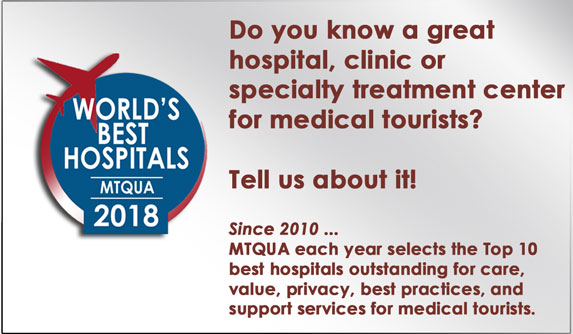 Physically large or obese patients and bariatric surgery patients are at greater risk as medical tourists.
Physically large or obese patients and bariatric surgery patients are at greater risk as medical tourists.
Receiving doctors or hospitals and medical tourism companies must be ready to address more than the usual needs of medical tourists, or be prepared to risk the success of their medical tourism business because patients are harmed.
Weight loss surgery is a growth area in medical tourism. Medical tourists who choose weight loss surgery often do so without the help or guidance of a hometown doctor. Because of this, the medical travel facilitator, surgeon or hospital quality leader has a specific burden to protect these patients against the increased safety risks. The medical travel facilitator should review the facilities and surgeon’s qualifications to lessen the vulnerability of the bariatric tourist.
Bariatric surgery risks for medical tourists
The health care concerns of these patients extend beyond standard patient safety needs and risk avoidance issues and, for bariatric patients, beyond nutritional counseling and special diets.
Safety issues for medical tourists
According to a new report from the patient safety organization ECRI, routine hospital procedures pose unique challenges with bariatric patients, including patient handling and transport, diagnostic imaging, nursing care, airway management, and medication dosing.
These issues also profoundly affect any surgical patients with a high BMI or very tall, large men who, because of their size, may be at risk for perioperative complications such as difficult intubation, respiratory difficulties, or positioning injuries.
Safety risks checklist for medical tourism service providers
Here is a checklist to identify these safety risks, based on the ECRI report. The report shows how few hospitals meet these enhanced safety needs, even in countries where medical care is well developed.
- Physical size
One critical risk factor for these medical tourists is any marked difference in physical size between the patient and the typical nurses and hospital staff on the ward, operating suite or intensive care unit.
In countries like Thailand, Malaysia, or Korea, nurses are generally physically smaller and are often physically unable to handle a very large or heavy patient. If the patient becomes unruly or uncooperative, particularly during evening or night shifts, he may compromise an IV drip or displace critical sensors. - Discrimination and poor attitude
Sometimes certain social customs or attitudes – on either the patient’s part or the staff – compound this physical size problem.
Bariatric patients are especially vulnerable in these situations. They are often discriminated against by nurses and hospital staff. - Training and education
Education and training are needed to teach ward staff in safe lifting techniques for bariatric patients. Education and policy changes may be required to establish zero tolerance for discriminatory attitudes and behaviors in the hospital. - Special equipment
In addition to standard items like bigger wheelchairs, bigger operating tables, and specially designed vehicles, some hospitals or clinics that present themselves as bariatric surgery specialists to medical tourists may consider purchasing special lifting equipment and special surgical tools and equipment, including intubation equipment for difficult airway management, specifically for these patients. - Bariatric beds
- Bariatric OR tables
- Bariatric wheelchairs
- Extra-large gowns, blankets, identification bracelets, blood pressure cuffs, and compression stockings
- Lateral transfer aids
- Longer needles and catheters
- Oversized chairs in public areas and exam rooms
- Patient lifts (fixed or portable models)
- Portable bariatric commodes
- Scales (either wheelchair accessible or standing platform)
- Stretchers with adequate weight capacity and size
- Tracheal tubes that are extra-long and small in diameter
- Pre-admission screening
A patient’s height and weight should be provided at the time of booking the surgery to identify patients with a high BMI. If the patient’s BMI is 35 or greater, the hospital or medical travel facilitator should follow up with further questions to determine whether the patient has conditions such as sleep apnea that could mark a risk for respiratory problems. - Testing
Diagnostic testing equipment should be reviewed for suitability for patients who are overly large or obese. - Post-operative care
Special nursing guidelines can be put in place to reduce respiratory complications. All on the ward should be aware of these guidelines, dietary and mobility restrictions. Pressure-reducing mattresses make a significant difference. Pills should first be pulverized to help bariatric patients swallow them. The medical travel facilitator may consider including a small mortar and pestle in the take-home kit for the patient.
All hospitals should have the following equipment and supplies readily available.
What practices have you observed that might affect or change the risk of surgery on the larger-sized medical tourist?

 >
>